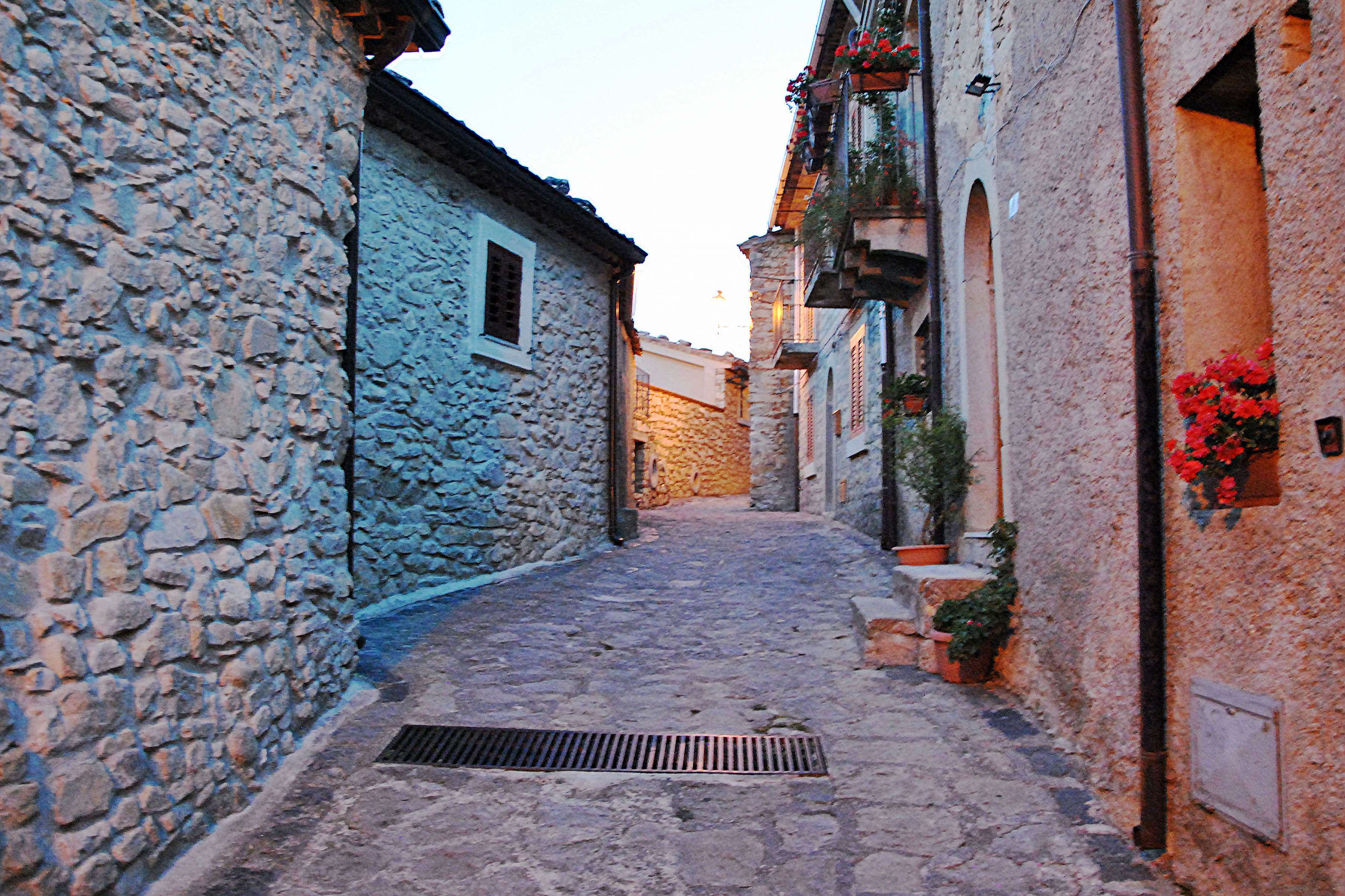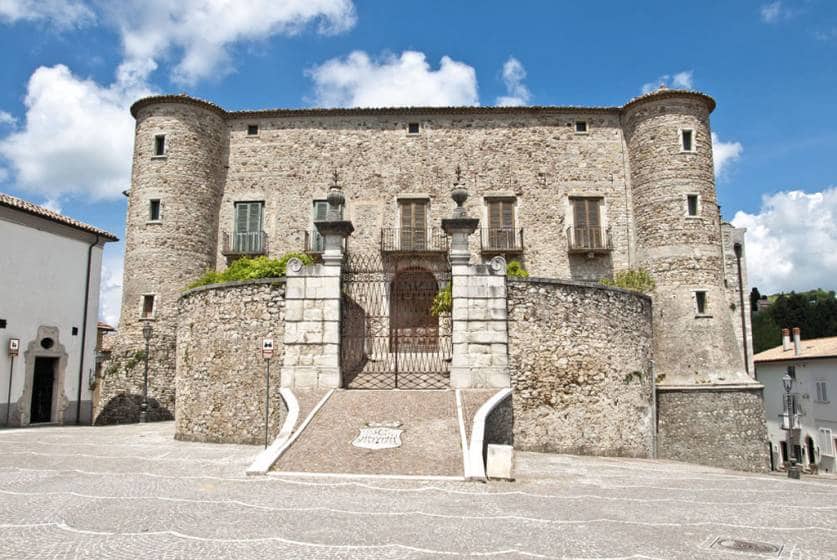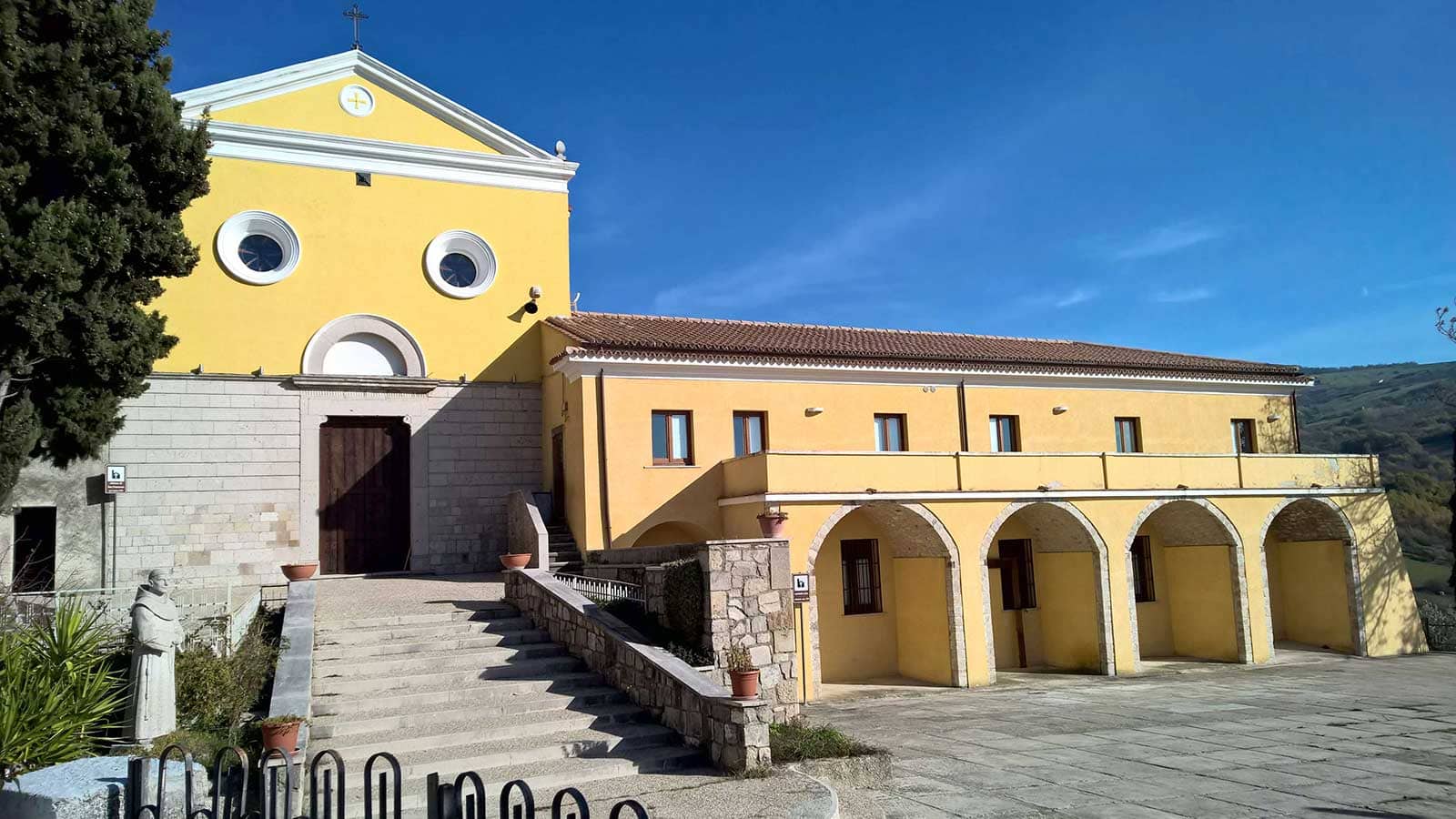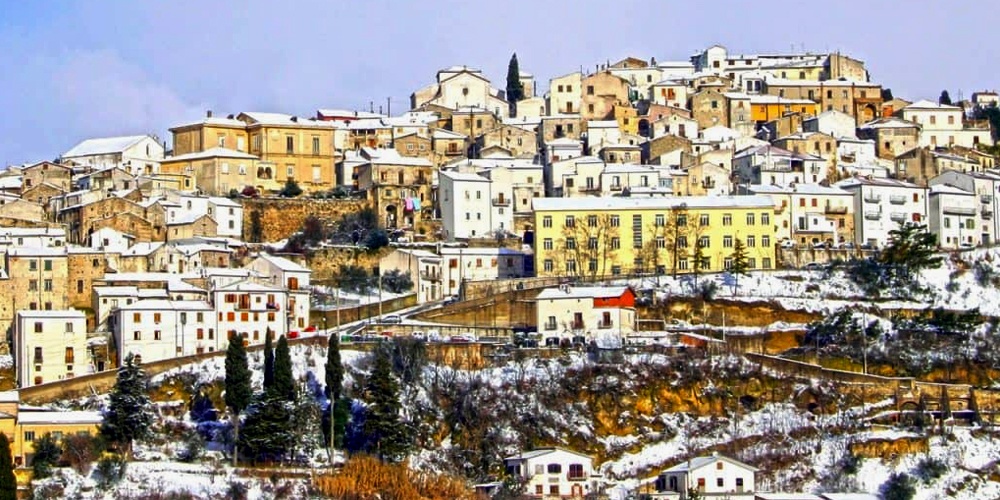A small town of Campania excellence
With just over 1000 inhabitants, Zungoli is a village in the province of Avellino. Considered one of the most beautiful villages in Italy by the private association of the same name, for its marked historical and artistic interest, it is one of the five inhabited centers of Campania to have received the "orange flag", a qualitative recognition in the tourism environmental conferred by the Italian Touring Club, an ONLUS whose aim is the territorial and tourist promotion. Located on the border with the Puglia region, the small inhabited center looks like a typical Irpinian municipality thanks to its progressive development on the top of a tuff hill, characterized by an inhabited historical center and crossed by cobbled streets and stone stairways.

A feudal village which the nobility took care of

Although the name of the ancient village appears for the first time around the mid-eleventh century, indicated as Zuncoli on the occasion of the consecration of the Church of San Cataldo, there are finds that indicate a human settlement since the Copper Age. Its strategic position, far from the large inhabited centers and hidden from the nearby mountains, has allowed it to be home to a fortress that has been preserved almost completely to the present day, the so-called “Castrum Caroli”, built around the twelfth century and owned Primarily by the Angevins: it was ceded by Carlo I D'Angiò to Enrico di Valdimonte, and then passed on to other ancient feudal families of the time who resided inside taking care of it until the abolition of feudalism in 1806.
The Norman Castle and the historical center that embraces it

Among the architectural assets that have allowed the village of Zungoli to be defined and recognized as one of the most beautiful in Italy there is the Norman Castle with a square plan, built with the clear intent to defend the area from the Byzantine raids, which presented originally four cylindrical corner towers on escapee bases: one of them was demolished, without ever being rebuilt, by the earthquake of 1456 that hit central-southern Italy. The façade, 30 meters wide and 14 meters high, over the centuries has received, just like the interior of the building, numerous interventions aimed at transforming it into a civil residence, including one last in the first half of the 19th century by the Marquis Susanna of Sant'Eligio, who for over two centuries have been the current owner family. The Castle is located in one of the two main squares and can be reached from the north via a tuff stone bridge that separates the historic center of the village from the rest of the surrounding houses. In the historic center, among the narrow streets that intersect between logos, there are several buildings with interesting structures and ancient stone elements, which over the years, despite having undergone variations, have always remained intended for residential use, such as Palazzo Caputi in front of the former Bourbon prison, the Palazzo Annichiarico Petruzzelli located next to the Castle in the homonymous square, Palazzo Giandolfi and Palazzo Jannuzzi, all residences of relevant individuals of the time who still today belong to the descendants of the noble families from which each takes its name.
The church that preserves authentic beauty despite the collapses

On the place of origin of the Church of San Cataldo, just outside the town and next to the Vallone stream, today it is possible to visit the Church and the convent of San Francesco of Frati Minori, the most important religious complex in eastern Irpinia. The current construction is the result of the numerous collapses due to earthquakes over the centuries: after the earthquake of the 1456, of the 1703 and finally of the 1930, the current structure not only presents unchanged elements of the original, but has also had the opportunity to expand thanks to the reconstructions of the same. Today the convent, built in the mid-16th century, is divided into two floors: a lower one where the kitchen and wool's laboratories, and the upper one which houses the friars rooms. Inside the church we find elements that have been preserved over time, such as a precious walnut wooden choir of great interest and artistic importance, made by an anonymous friar who presumably used parts of a much older choir. A 17th century painting depicting San Gerolamo belongs to the elements preserved over time; a marble altar; a canvas belonging to the sixteenth or seventeenth century depicting San Francesco between two angels, today attributable to the Neapolitan school of the seventeenth century, since sensitive reflections attributable to teachings by Caravaggio have been noted, or Guarini; and finally, two nineteenth-century wooden statues: the first of the Immaculate Conception built in Campobasso around 1600 and the other, dating back to 1704, which reproduces the Crown of Foggia.
How to get to and what to enjoy in Zungoli

Zungoli does not have a railway station, but is served by the main public transport company in Irpinia (A.IR.) which guarantees daily trips (excluding holidays). About 61km away from Avellino, about 50km from Benevento, and about 67km from Foggia, you can visit it to taste typical agri-food products of the area, Irpinia and the Ufita mountain community, such as "caciocavallo podolico" and the "caciomolara" or aged cheese inside the caves, various other types of cheese, salami or any other meal seasoned with extra virgin olive oil Irpina DOP from the surrounding hills. In addition to the summer period in which the city lights up thanks to the events that enhance the place and the festival dedicated to Sant'Anna, patron of the city, Zungoli, being part of the most beautiful villages in Italy, adheres to initiatives from the association of the same name which contributes to safeguarding, conserving and revitalizing small centers which, being outside the main tourist circuits, risk, despite the great value, being forgotten with consequent degradation, depopulation and abandonment.
About the author
Written on 15/01/2020




Alfred Runo
Zungoli: a small village born for defensive purposes that over the years has acquired artistic and architectural value so as to become part of the most beautiful villages in Italy.